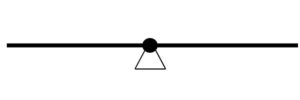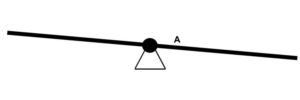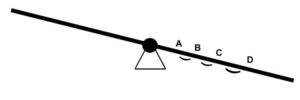Where and when will regular and complementary finally start working together????
After posting my last blog, it became clear to me that I want to start by explaining how the New Therapies with the Star Remedies work in chronic situations.
I could describe a remedy every time, which I love doing, but I want to start by describing how exactly how this therapy works.
Why a person suffers from endogenous depression, how it came about, so that the reader gets an even clearer picture of the origins of e.g. this depression.
This cannot be described in one blog. It's too much. I think I will have to do it in three or four.
After that, I go on merrily again with the description of each individual blossom remedy.
Years ago, I went to Utrecht University (UU) because I am so keen on scientific research on how remedies work.
No matter what I tried, nowhere can I get my foot in the door.
I have offered to participate in every double-blind study...so convinced (after 40 years of working with blossom remedies and having treated so many people) but these studies cost so much money....that won't or can't be spent for this.....the pharmacy doesn't benefit from this, do they?
Because I find Dr Bach's work so important (to me always the basis of flower therapy and out of respect for Dr Bach), I will start by giving a brief description of Dr Bach's work and life despite the fact that so much has already been written about him.
Bach flower therapy: Healing the body and mind
The history of Edward Bach
Dr Bach discovered back in the 1930s that certain types of flowers bring harmony to the human mind.
Edward Bach was born in 1886 in England. When he left school at the age of 16, he was determined to become a doctor. Believing he could not ask his parents to provide for the cost of the long medical education, he decided to work first in his father's copper foundry. For three years he worked in the Bach factories in Birmingham, which were very tough years for him. But it was precisely in this difficult period of his life, in the midst of fellow workers, that he gained insight into human character, which would later form the basis of his future work. Among factory workers, there was always the fear of getting sick. Getting sick meant loss of work and income for them, they often worked on because being sick also meant a heavy burden of medical expenses. He also saw that little more was being done about people's complaints than suppressing symptoms, and it became clear to him that his path would lie in finding a way of healing that would heal body and mind. Bach was convinced even then that a simple healing method had to be found, one that would cure chronic diseases.
At the age of 20, he finally started his medical training. As a medical student, he discovered during his observations at the hospital that not all patients who had the same disease were also cured with the same treatment. The same medicine, which was apparently able to cure some of them, had no effect at all on others.
He realised even then that patients with similar personalities often responded to the same medicine, while others, with different personalities, required different treatment, despite suffering from the same ailment. Thus, he found out early on that the personality of the individual was of even greater importance in disease than the body.
In his Harley Street practice, there were many patients with chronic complaints who did not benefit from any treatment. Modern medical science fell short. They focused, according to Bach, too much on the physical body. Hoping to find answers to his many questions, he began to study bacteriology and homeopathy. He discovered that certain gut bacteria had a lot to do with chronic diseases. He developed seven oral vaccines called Bach nosodes, which are still prescribed by allopathic and homeopathic doctors today.
When Edward Bach read the works of Hahnemann, a German physician of the 18th century who became known as the father of homeopathy, he concluded that there was a great similarity between Hahnemann and him, viz. that the principle of true healing lay in treating the human being and not his disease.
Bach hypothesised that the cause of illness must be negative moods such as fear, sadness, insecurity, loneliness, impatience, etc.
And this was the actual beginning of his new work.
The beginning of new work and the discovery of remedies
The urge in him grew ever greater to go into the nature of Wales, the land where his ancestors came from. In early 1930, Bach gave up his practice in London, left for Wales and used all his time to search for remedies in nature. Bach's sensitivity was greatly developed and his strong connection with nature made him feel the healing power of blossoms on his body and soul. Until 1936, Bach developed 38 remedies, each referring to a particular state of mind. The first 19 remedies Bach discovered were prepared using the "solar method". A very simple method. This involves picking blossoms, growing in their natural environment, early in the morning on a bright, sunny day. The blossoms are placed in a glass bowl filled with water from a nearby natural spring in such a way that the surface of the water is completely covered. The sun transfers the vibrations of the blossoms to the water. The blossoms remain in the bowl for about three to four hours. Then twigs or leaves of the same plant are used to remove the blossoms from the water. This solution is mixed with the same parts of brandy - this is because of shelf life. Suppose there has been half a litre of water in the bowl, which is topped up with half a litre of brandy, so you have a litre of "mother tincture". From this, two drops are used to make a "stockbottle", which is topped up with brandy. These bottles are available in the relevant shops
Since not all trees, shrubs and flowers bloom in a season when there is a lot of sunshine, the other blossoms were prepared using the boiling method: this involves boiling the blossoms for 30 minutes. Once these have cooled, everything is filtered and mixed again with the same amount of brandy and finished in the same way as in the sunshine method.
I think the amazing thing about Edward Bach is not only the discovery of the remedies, but that the 38 remedies are the actual archetypes that deal with feelings e.g. jealousy, lack of self-confidence, anxiety or depression. Everyone in the world has these feelings whether you live in the Netherlands, South Africa or Alaska. These moods are typical for all people. The same is also true for animals and flowers, trees, etc. Animals also know fear or jealousy or want constant attention, plants you put in a different corner can look wilted after a while e.g. even though they get the same amount of sun and water. They may also feel deprived if they are put in a different place because a new plant is added.
The philosophy of Edward Bach
And his classification of remedies
Bach assumed that the 38 "virtues" serve as a connection between your personality, as you manifest here on earth, and your Higher Self or soul.
If you do not act in harmony with your Higher Self, "virtues" turn into negative states of mind, e.g.:
- Out of faith: pessimism
- Out of hope: despair
- Out of bravery and confidence: fears
Through their vibrations, the blossoms restore contact with the Higher Self and help those involved further develop virtue.
"The negative soul states are not "combated" as symptoms, because doing so would maintain them energetically. Rather, they are flooded, as it were, by higher energy vibrations, causing them to, as Bach puts it, "melt away like snow in the sun".
This is how Dr Bach described the above. I will return to this later because ( given current medical developments), the outcome is the same however the scientific explanation is quite different in my opinion.
"People" have classified the 38 remedies into seven groups, (probably analogous to the seven Bach nosodes) viz.
- Fear
- Uncertainty
- Insufficient interest in the here and now
- Loneliness
- Hypersensitivity to influences and ideas
- Despondency or despair
- Overconcern for the welfare of others
However, I have not come across this anywhere in Dr Edward Bach's original work and, in my opinion, these groups were created out of ignorance.
Shortly after Bach developed the 38 remedies, he died in his sleep at the age of 50. His life's work was over. He was never able to treat many people with chronic complaints. After Edward Bach's death, his work was carried on by his two most dedicated assistants - Nora Weeks and Victor Bullen. They transferred their work back to John Ramsell and Nicky Murray, brother and sister, who became the trustees of the "Bach centre". Unfortunately, Nicky Murray's name is no longer mentioned anywhere!
Sometimes I read stories depicting Edward Bach as some kind of demigod. To my mind, he was an ordinary man, loved to have a drink in the pub, smoked more than might have been good for him, loved helping fishermen haul their boats ashore and taking walks in his beloved villages of the countryside, but through the defining characteristic of his work, viz. his selfless desire to help humanity, he has left us a tremendous legacy.
The New Therapies according to Dietmar Krämer
Dr Edward Bach was not able to expand, refine his work. Who did and still does is Dietmar Krämer, a German healing practitioner. With his vast knowledge, he has deepened Dr Bach's healing method. He has worked out a method in which it is possible to peel off problems layer by layer until you get to the deepest, underlying problem. In an old booklet by John Ramsell and Niekie Murray: "On the Bach Flower Remedies" there is a chapter:
How long do you have to apply the Remedies before any results can be seen?
There are many possible answers to this question. Much depends on how deeply rooted the problem at hand is. The following here, I think, already shows a bit of how Dietmar Krämer's New Therapies connect to Dr Bach's original work. There are many possible answers to this question. For an acute situation, for example, you can put 2 drops of any remedy into a glass of water and take small sips of it. With that you will already achieve results in such a case. However, if it is a long-standing problem, then of course many more details need to be known in order to determine which remedies are right for that person.


In figure 2, someone, who is very skilled and enjoys his work, feels one day that his work is becoming a heavier burden for him than he realised. At this stage, the problem is not yet firmly rooted. A slight adjustment is needed to restore this balance. However, if he does nothing to regain his balance, the feeling of falling short will take hold. Then a snowball effect will occur: for instance, he will start doubting his own ability, whereas before he was brimming with self-confidence. This in turn can lead to all sorts of other negative moods.

If this slippage continues, he will eventually discover - after a period of 1 to perhaps 20 years and perhaps much longer - that he has gone completely off balance. (Figure 4). By then, his problem has taken such firm root that he is weighed down by stress, worry and anxiety. This results in him eventually collapsing. Depending on what is physically his weak point, his feeling of discomfort will be compounded by the occurrence of an ulcer, asthma, sinusitis, etc. If he is lucky enough to be in such good shape that these kinds of ailments do not occur, he is likely to collapse mentally (position D).

Conclusion: How long it takes for remedies to have a positive effect depends on the person's position on the slope.
Clearly, if you start treating position A, nothing will change in the balance of the seesaw.
Therein lies precisely the answer when you start working with flower remedies according to Dietmar Krämer's New Therapies.
There will be more insight into this methodology next week.
Briefly, we start from resolving the external negative states of mind first, then the negative decompensation states of mind, the negative compensation states of mind, the negative communication states of mind, level I, level II, level III, level IV and level V.
It may seem like a lot of what has been described above, however, if I then post my "working out list" in the blog as well, it will become clear to everyone and insight will come how, through flower remedies, you can take control of your own life.
Since Dietmar Krämer's method treats the "whole" human being up to level I (no further), the question might come up if this is completely complete, (which it has turned out to be over the last 27 years, that's how long I have been working with him)
Madeleine Meuwessen
